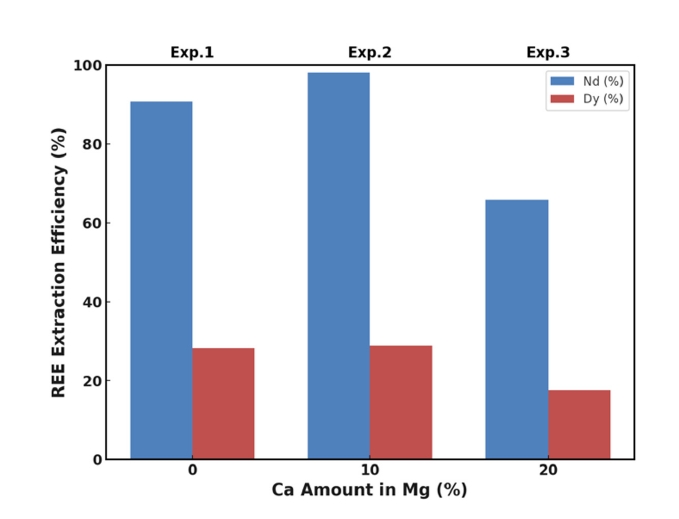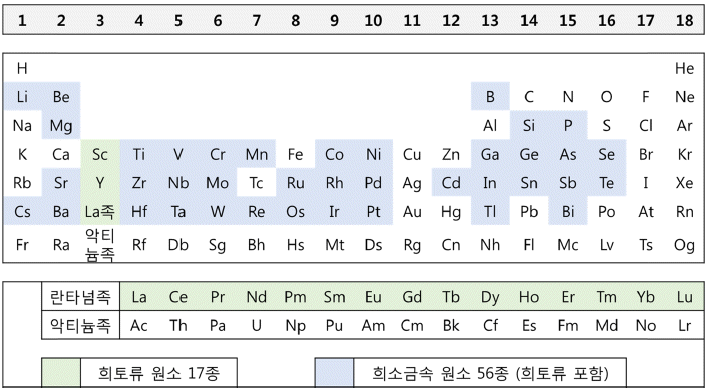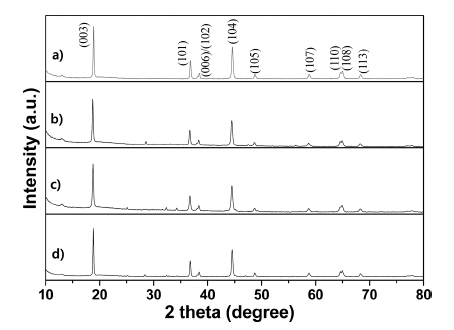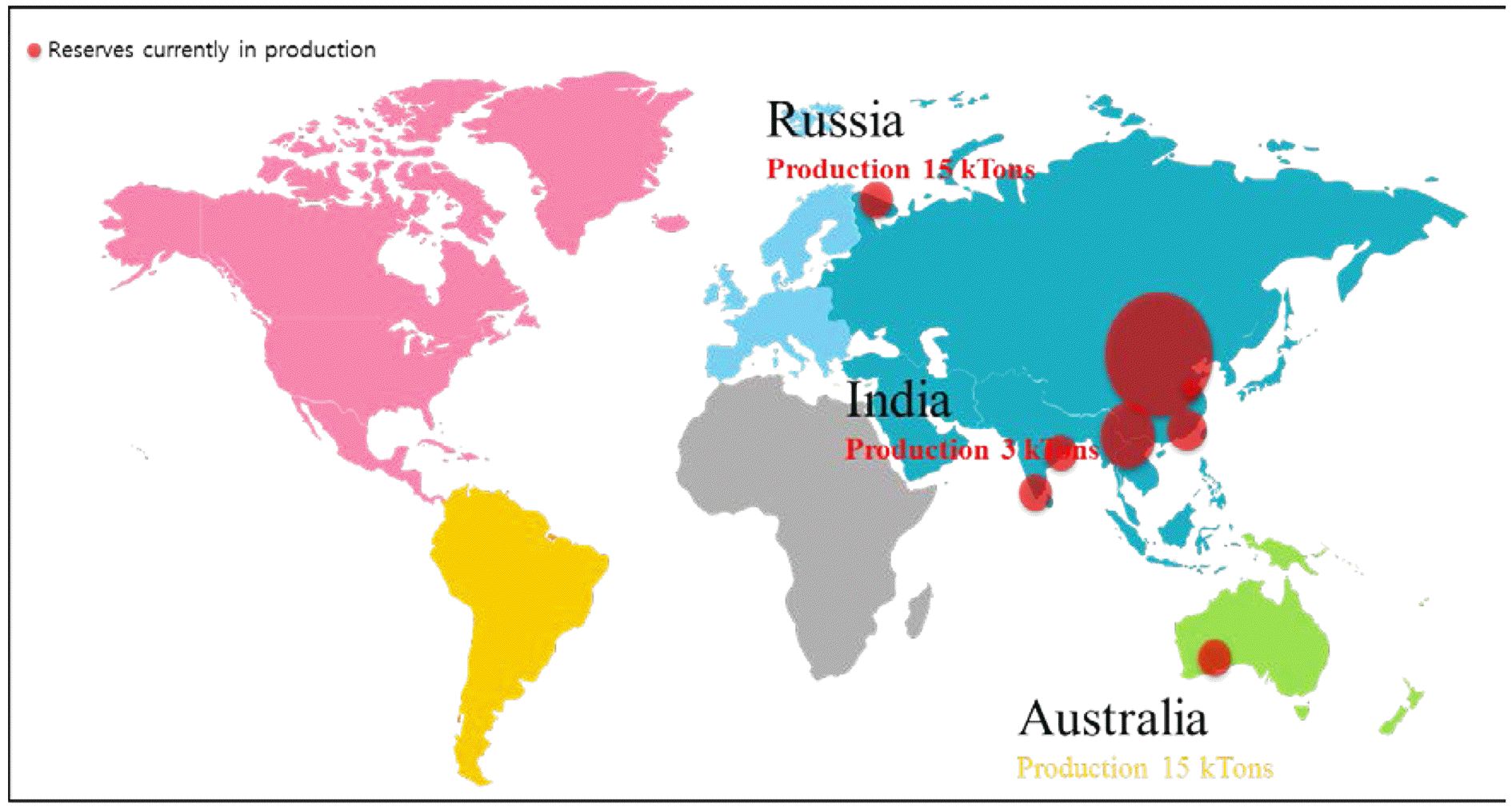Search
- Page Path
- HOME > Search
- [English]
- Effect of Calcium Addition on the High-Temperature Recovery of Nd and Dy from Nd-Fe-B Scrap Using Mg-Based Extractants
- Hyoseop Kim
- J Powder Mater. 2024;31(6):493-499. Published online December 31, 2024
- DOI: https://doi.org/10.4150/jpm.2024.00283

- 646 View
- 14 Download
-
 Abstract
Abstract
 PDF
PDF - This study investigated whether calcium (Ca) addition improved the recovery of neodymium (Nd) and dysprosium (Dy) from Nd-Fe-B magnet scrap using magnesium (Mg)-based liquid metal extraction (LME). Traditional LME processes are limited to temperatures up to 850 °C due to oxidation issues, reducing the efficiency of rare earth element (REE) recovery, especially for Dy. By adding 10 wt.% Ca to Mg and increasing the processing temperature to 1,000 °C, we achieved nearly 100% Nd and approximately 38% Dy recovery, compared to 91% and 28%, respectively, with pure Mg at 850 °C. However, excessive Ca addition (20 wt.%) decreased the recovery efficiency due to the formation of stable intermetallic compounds. These results highlight the critical role of Ca in optimizing REE recycling from Nd-Fe-B magnet scrap.
- [Korean]
- Standardization Status of Rare Earth Elements Recycling in ISO TC 298
- Mi Hye Lee, Yosep Song, Ji Sun On, Seung Hwan Yoon, Munhwan Han, Bum Sung Kim, Taek-soo Kim, Bin Lee
- J Powder Mater. 2022;29(2):159-165. Published online April 1, 2022
- DOI: https://doi.org/10.4150/KPMI.2022.29.2.159

- 755 View
- 22 Download
-
 Abstract
Abstract
 PDF
PDF Rare earth elements, which are important components of motors, are in high demand and thus constantly get more expensive. This tendency is driven by the growth of the electric vehicle market, as well as environmental issues associated with rare-earth metal manufacturing. TC 298 of the ISO manages standardization in the areas of rare-earth recycling, measurement, and sustainability. Korea, a resource-poor country, is working on international standardization projects that focus on recycling and encouraging the domestic adoption of international standards. ITU-T has previously issued recommendations regarding the recycling of rare-earth metals from e-waste. ISO TC 298 expands on the previous recommendations and standards for promoting the recycling industry. Recycling-related rare earth standards and drafts covered by ISO TC 298, as well as Korea’s strategies, are reviewed and discussed in this article.
- [Korean]
- Standardization of Rare Earth Elements in ISO TC 298 and Korea's Standardization Strategy
- Nu Si A Eom, Sardar Farhat Abbas, Haq Muhammad Aneeq, Rasheed Mohammad Zarar, Mi Hye Lee, Bum Sung Kim, Taek-Soo Kim, Bin Lee
- J Korean Powder Metall Inst. 2019;26(3):251-257. Published online June 1, 2019
- DOI: https://doi.org/10.4150/KPMI.2019.26.3.251

- 667 View
- 3 Download
-
 Abstract
Abstract
 PDF
PDF Since the ISO decided to deal with rare-earth elements at the 298th Technical Committee (TC) in 2015, Korea has participated in four plenary meetings and proposed four standards as of June 2019. The status of ISO TC 298, the standards covered by the TC, and the standardization strategies of Korea are summarized. Korean delegations are actively engaged in WG2, which deals with recycling, proposing four standards for fostering the rare-earth recycling industry. However, the participation of domestic experts is still low compared with the increase in the number of working groups and the number of standards in TC 298. The aim of this article is to summarize the current status of ISO international standards related to rare-earth elements, to encourage relevant experts to participate in standardization, and to develop international standards that accurately reflect the realities of the industry.
- [Korean]
- Effect of Single and Dual Doping of Rare Earth Metal Ce and Nd Elements on Electrochemical Properties of LiNi0.83 Co0.11Mn0.06O2 Cathode Lithium-ion Battery Material
- Yoo-Young Kim, Jong-Keun Ha, Kwon-Koo Cho
- J Korean Powder Metall Inst. 2019;26(1):49-57. Published online February 1, 2019
- DOI: https://doi.org/10.4150/KPMI.2019.26.1.49

- 1,134 View
- 10 Download
- 2 Citations
-
 Abstract
Abstract
 PDF
PDF Layered LiNi0.83Co0.11Mn0.06O2 cathode materials single- and dual-doped by the rare-earth elements Ce and Nd are successfully fabricated by using a coprecipitation-assisted solid-phase method. For comparison purposes, nondoping pristine LiNi0.83Co0.11Mn0.06O2 cathode material is also prepared using the same method. The crystal structure, morphology, and electrochemical performances are characterized using X-ray diffraction (XRD), scanning electron microscopy (SEM), energy dispersive spectrometer (EDS) mapping, and electrochemical techniques. The XRD data demonstrates that all prepared samples maintain a typical α-NaFeO2-layered structure with the
R-3m -
Citations
Citations to this article as recorded by- Numerical approach for lithium-ion battery performance considering various cathode active material composition for electric vehicles using 1D simulation
Heewon Choi, Nam-gyu Lim, Seong Jun Lee, Jungsoo Park
Journal of Mechanical Science and Technology.2021; 35(6): 2697. CrossRef - Synthesis of CeVO4-V2O5 nanowires by cation-exchange method for high-performance lithium-ion battery electrode
Xueliu Xu, Shiying Chang, Taofang Zeng, Yidan Luo, Dong Fang, Ming Xie, Jianhong Yi
Journal of Alloys and Compounds.2021; 887: 161237. CrossRef
- Numerical approach for lithium-ion battery performance considering various cathode active material composition for electric vehicles using 1D simulation
- [Korean]
- Trends and Implications of International Standardization for Rare Earths
- Sardar Farhat Abbas, Sang-Hyun lee, Bin Lee, Bum-Sung Kim, Taek-Soo Kim
- J Korean Powder Metall Inst. 2018;25(2):165-169. Published online April 1, 2018
- DOI: https://doi.org/10.4150/KPMI.2018.25.2.165

- 553 View
- 4 Download
- 2 Citations
-
 Abstract
Abstract
 PDF
PDF Rare earth elements (REEs) are considered to be vital to modern industry due to their important roles in applications such as permanent magnets, automobile production, displays, and many more. The imbalance between demand and supply of REEs can be solved by recycling processes. Regarding the needs of industry and society, the International Organization for Standardization, Technical Committee 298 (ISO/TC298) Rare Earths has been recently launched for developing international standards on rare earth elements. In accordance with the suggestion of its constituents, it is tentatively working to develop the appropriate standards under five working groups (WG) on terms and definitions (WG1), element recycling (WG2), environmental stewardship (WG3), packaging, labelling, marking, transport, and storage (WG4), and testing analysis (WG5). The scope and structure of ISO/TC298 on the topic of rare earths is discussed in this document.
-
Citations
Citations to this article as recorded by- Synthesis and magnetic properties of Sm2Co17 particles using salt-assisted spray pyrolysis and a reduction-diffusion process
Tae-Yeon Hwang, Jimin Lee, Min Kyu Kang, Gyutae Lee, Jongryoul Kim, Yong-Ho Choa
Applied Surface Science.2019; 475: 986. CrossRef - Worker Safety in the Rare Earth Elements Recycling Process From the Review of Toxicity and Issues
Seo-Ho Shin, Hyun-Ock Kim, Kyung-Taek Rim
Safety and Health at Work.2019; 10(4): 409. CrossRef
- Synthesis and magnetic properties of Sm2Co17 particles using salt-assisted spray pyrolysis and a reduction-diffusion process
TOP
 kpmi
kpmi


 First
First Prev
Prev


